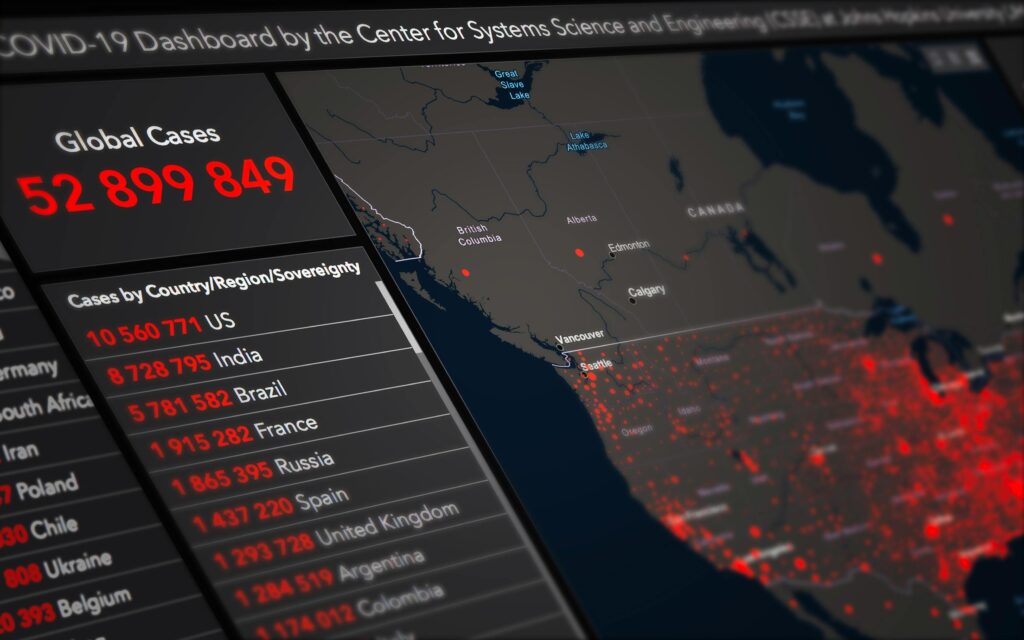In today’s data-driven world, understanding shopper behavior, conclusions, and inclinations is significant for businesses, analysts, and policymakers. Online overviews have developed as an effective instrument for gathering this profitable data productively and viably. Be that as it may, the victory of an internet overview pivots not fair on the questions inquired but on the way the overview is modified. In this article, we dig into the complexities of online study programming, investigating the strategies, apparatuses, and best hones that guarantee the creation of smart lock-in overviews.

The Basics of Online Overview Programming
Online overview programming includes making computerized surveys that respondents can complete over the web. This preparation incorporates planning the study format, scripting the questions, executing rationale and branching, and guaranteeing a consistent client encounter. Key components incorporate:
- Overview Plan:
The visual and auxiliary format of the overview. - Address Scripting:
Composing and coding the study questions. - Rationale and Branching:
Actualizing conditional ways based on respondents’ answers. - Client Involvement (UX):
Guaranteeing the study is simple to explore and total.
Instruments and Stages for Online Overview Programming
A few apparatuses and stages encourage the creation and sending of online overviews. A few well-known choices include:
- Qualtrics:
Known for its vigorous highlights and adaptability, Qualtrics is a comprehensive study instrument utilized by businesses and analysts alike. It offers progressed rationale, branching, and customization alternatives. - SurveyMonkey:
A user-friendly stage is reasonable for making straightforward to modestly complex overviews. It gives different address sorts and formats. - Google Shapes:
A free device that’s perfect for fundamental studies. It coordinates consistently with other Google Workspace apparatuses and offers direct plans and examination highlights. - SurveyGizmo (presently Alchemer):
Offers progressed highlights such as custom scripting and API integration, making it appropriate for more complex overview needs.
Creating Viable Overview Questions
The heart of any study lies in its questions. Well-crafted questions are clear, brief, and planned to evoke exact reactions. Here are a few tips for successful address composing:
- Clarity and Accuracy:
Maintain a strategic distance from equivocalness and guarantee each address is effortlessly justifiable. Utilize straightforward dialect and maintain a strategic distance from language. - Significance:
Guarantee each address serves the survey’s reason and contributes to the general inquiry about destinations. - Balanced Alternatives:
For multiple-choice questions, give adjusted and comprehensive reaction alternatives, counting an “Other” choice when fundamental. - Maintain a strategic distance from Driving Questions:
Guarantee questions are impartial and don’t propose a specific reply.

Executing Rationale and Branching
Rationale and branching are basic for making energetic and respondent-friendly studies. They permit the study to adjust based on past answers, making the involvement more significant and locking in. Here’s how to viably actualize rationale and branching:
- Skip Rationale:
Coordinate respondents to distinctive questions based on their past answers. For case, if a respondent answers “No” to having utilized an item, they can skip questions related to client involvement. - Show Rationale:
Appear or stow away questions based on particular conditions. This keeps the overview brief and pertinent to each respondent. - Channeling:
Embed answers from past questions into consequent ones to personalize the overview. For occasion, on the off chance that a respondent notices a particular brand they utilize, allude to that brand in taking after questions.
Upgrading Client Encounter (UX)
Positive client involvement is imperative for empowering study completion and getting dependable information. Consider these UX standards:
- Versatile Optimization:
Guarantee the overview is mobile-friendly, as numerous respondents will total it on their smartphones or tablets. - Clear Route:
Utilize advance bars, area headers, and back buttons to assist respondents explore the overview effectively. - Steady Plan:
Keep up a reliable plan and color scheme throughout the overview to form a proficient see. - Pre-testing:
Conduct a pilot test with a little gather to recognize any issues with address clarity, rationale, or route.
Information Security and Security
Ensuring respondent information is foremost. Follow information assurance controls and best hones:
- Secrecy and Secrecy:
Educate respondents on how their information will be utilized and guarantee their reactions are mysterious and secret unless something else is expressed. - Secure Information Storage:
Utilize secure stages and encryption to store overview information. - Compliance with Directions:
Guarantee your study complies with pertinent information assurance controls such as GDPR or CCPA.

Analyzing and Translating Overview Information
Once the study is completed, another step is analyzing the collected information to infer significant experiences. Here’s how to approach this stage:
- Data Cleaning:
Evacuate fragmented or conflicting reactions to guarantee information quality. - Factual Examination:
Utilize measurable devices and software to analyze quantitative information. Common apparatuses incorporate SPSS, R, and Python. - Topical Investigation:
For open-ended reactions, conduct a topical investigation to distinguish common topics and designs. - Announcing:
Show discoveries in a clear and noteworthy way. Utilize visualizations such as charts and charts to improve understanding.
Challenges and Arrangements in Online Overview Programming
Despite its preferences, online study programming can show challenges:
- Study Fatigue:
Long or complex overviews can lead to respondent weariness. Keep overviews brief and regard respondents’ time. - Specialized Issues:
Guarantee the study stage is vigorous and can handle the anticipated reaction stack. Frequently test for any specialized issues. - Predisposition and Mistake:
Plan questions carefully to dodge predisposition. Utilize pilot testing to recognize and redress potential blunders.
Progressed Methods in Online Overview Programming
To maximize the viability and profundity of bits of knowledge from online studies, progressed programming methods can be utilized. These methods upgrade the survey’s capacity to capture nuanced information, progress respondent engagement, and streamline the information investigation preparation. Underneath, we investigate a few of these progressed methods.

1. Energetic Substance and Versatile Addressing
Energetic substance includes changing overview substance based on past reactions in genuine time. This makes the study more significant and locks in for each respondent.
- Versatile Surveys:
These utilize calculations to alter the study way powerfully based on the respondent’s answers. For illustration, on the off chance that a respondent shows tall mastery in a subject, consequent questions can be custom-made to be more challenging or point-by-point. - Personalization:
Consolidating respondent’s names, past answers, or particular references inside questions to make a personalized encounter. This increments engagement and reaction exactness.
2. Progressed Rationale and Scripting
Progressed rationale and scripting permit for more complex study structures and refined information collection.
- Custom Scripting:
Utilizing dialects like JavaScript inside study stages to make complex address sorts, validations, and intelligent components. - Settled Branching:
Executing numerous layers of branching to handle complex overview streams and scenarios. - Real-Time Calculations:
Performing real-time calculations based on respondent inputs. For occurrence, calculating a score or adding up to as respondents reply to numerical questions.
3. Multi-Modal Information Collection
Combining distinctive information collection strategies inside a single study can improve the dataset and give a more comprehensive understanding.
- Mixed-Mode Overviews:
Combining subjective and quantitative information collection strategies, such as joining content section areas for subjective criticism near quantitative rating scales. - Interactive media Integration:
Incorporating videos, pictures, and sound to make intelligent and engaging surveys. For illustration, an item demo video and after that inquiring for input.
4. Gamification
Gamification methods can altogether boost engagement and completion rates.
- Point Frameworks and Rewards:
Executing a focused framework where respondents win focuses for each completed area, which can be recovered for rewards. - Intelligently Components:
Utilizing intelligently address groups like sliders, drag-and-drop, and positioning questions to make the study encounter more locks in.
5. Real-Time Criticism and Bolster
Giving real-time input and feedback can upgrade the respondent encounter and information quality.
- Moment Input:
Appearing respondent’s moment input or comes about based on their answers can increment engagement. For illustration, after completing a segment on well-being propensities, appearing a personalized well-being score. - Live Bolster:
Advertising chat bolsters or offering assistance buttons inside the overview to help respondents in real time in case they experience challenges or have questions.

Optimizing Overview Information Quality and Reaction Rates
To guarantee high-quality information and strong reaction rates, several strategies can be utilized:
1. Pre-Survey Testing and Pilot Studies
Some time recently propelling a study, conducting exhaustive testing and pilot ponders can identify and correct potential issues.
- Convenience Testing:
Having a small bunch of individuals total the overview to test its usefulness, clarity, and stream. - Pilot Studies:
Running a pilot study with a small subset of the target populace to distinguish any issues with question comprehension, study length, and specialized issues.
2. Study Motivations
Advertising motivating forces can spur respondents to total the overview.
- Money-related Rewards:
Giving cash rewards, blessing cards, or rebates for completing the study. - Non-Monetary Rewards:
Advertising passage into a prize draw, getting to the elite substance, or certificates of cooperation.
3. Study Length and Complexity
Adjusting the requirement for comprehensive information with respondent tolerance for study length is pivotal.
- Brevity:
Keeping overviews as brief as conceivable while still collecting basic information. Point for a completion time of 10-15 minutes to diminish dropout rates. - Question Complexity:
Maintain a strategic distance from excessively complex or specialized questions unless focusing on a particular knowledgeable audience. Use basic dialect and clear enlightening.
4. Follow-Up and Updates
Taking up with non-respondents can altogether boost reaction rates.
- E-mail Updates:
Sending personalized e-mail updates to those who haven’t completed the overview. - Numerous Contacts:
Utilizing diverse communication channels, such as SMS or social media, to remind respondents.
Moral Contemplations and Information Security
Moral contemplations and information security are foremost in online study programming.
1. Educated Assent
Guarantee that respondents are completely educated about the reason for the study, how their information will be utilized, and their rights.
- Clear Assent Shapes:
Giving clear and brief assent shapes that respondents must concur to some time recently beginning the study. - Straightforwardness:
Being straightforward around the overview support, information utilization, and any third parties included.
2. Information Namelessness and Secrecy
Ensuring respondent namelessness and secrecy is significant.
- Anonymizing Information:
Removing by and by identifiable data (PII) from overview reactions to secure respondent character. - Secure Information Capacity:
Putting away information in secure databases with encryption to avoid unauthorized access.
3. Compliance with Controls
Following significant information assurance controls guarantees legitimate compliance and builds respondent belief.
- GDPR and CCPA Compliance:
Guaranteeing overviews comply with information assurance directions like the Common Data Protection Direction (GDPR) in Europe and the California Shopper Security Act (CCPA) within the Joined together States. - Normal Reviews:
Conducting standard reviews of information taking care of hones to guarantee compliance and address any potential issues.

Conclusion:
The Key Esteem of Online Overview Programming
Online study programming is an advancing field that combines innovative modernity with vital understanding. By acing progressed programming methods, optimizing information quality and response rates, and following to moral guidelines, analysts can make studies that abdicate high-quality, noteworthy information. As the advanced scene proceeds to advance, the capacity to plan and execute successful online studies will remain a vital skill for businesses, researchers, and policymakers to form informed decisions and drive advancement. Grasp the control of online study programming to open deeper insights and cultivate a culture of nonstop change and responsiveness in your organization.
